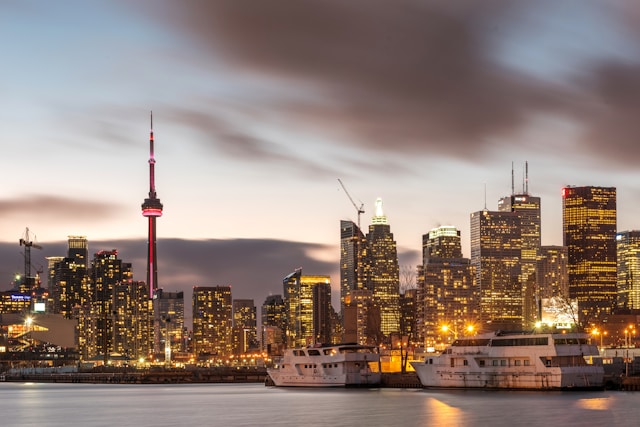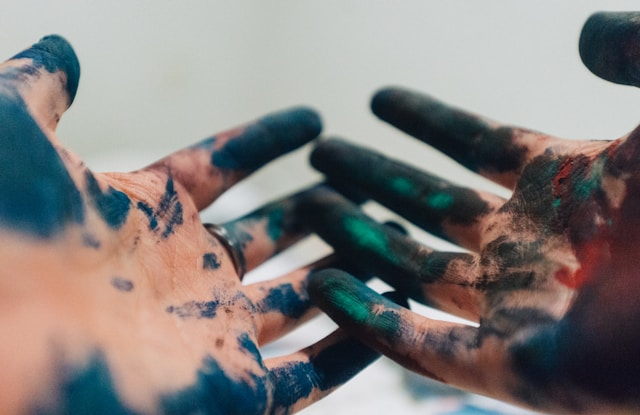Canada Art Scene: Trends and Influential Artists of Today
2024-05-23 | Art | No Comments

Canadian art embodies the rich tapestry of Canada’s history and the diverse identities that have shaped this nation. From the evocative totem poles carved by Indigenous peoples of the Pacific Northwest to the bold abstractions of the Group of Seven, Canadian visual arts offer a window into the cultural and geographical soul of the country. The interplay of landscape painting and sculpture, influenced by Canada’s vast and varied environments, reveals a commitment to preserving and expressing a unique Canadian identity.
Institutions dedicated to art education and the promotion of visual arts play a pivotal role in nurturing the growth and appreciation of Canadian art. These entities ensure the legacy of existing works and encourage the emergence of new artists. Across the country, galleries and museums proudly display the achievements of Canadian painters and sculptors, testament to their influence on the national consciousness.
The dialogue between the art of Canada’s Indigenous peoples and that of settlers and immigrants depict an ongoing journey of understanding and integration. This relationship underscores the complexity of Canadian identity and the role that art plays in communicating cultural narratives. While Canadian art continues to evolve, its history remains deeply rooted in storytelling and the representation of the country’s landscapes, people, and ethos.
Historical Development of Canadian Art
Canadian art has evolved through diverse phases https://meta-crash.com , deeply rooted in the country’s multifaceted history, with contributions ranging from Indigenous traditions to European influences, leading to a unique Canadian artistic identity.
Early Artistic Expressions
Art in Canada began long before European contact, with the Indigenous peoples crafting a rich tapestry of artistic expressions. With the establishment of New France by Samuel de Champlain and later British conquest, European artistic styles were introduced. These early European roots are evident in votive paintings and portraiture, which reflect both French and British influences, yet distinct developments particular to the Canadian experience began to emerge.
Golden Age to Modern Transformations
By the late 19th and early 20th centuries, a nationalistic spirit infused Canadian art, characteristically seen in the works of the Group of Seven. These artists glorified the Canadian landscape through bold strokes and vibrant colors. Tom Thomson and Emily Carr began to develop a truly Canadian style that differed from American and European norms. Institutions like the National Gallery of Canada in Ottawa were established, promoting Canadian artistry. A post-war emergence of artists such as Jean-Paul Riopelle and the Les Automatistes movement, along with Painters Eleven in Toronto, signaled a diversification as Canadian artists explored abstract art and questioned traditional norms.
Contemporary Canadian Art Scene
Today, Canadian art is a reflection of the country’s diversity and Canadian identity. Melding tradition and innovation, artists like Norval Morrisseau, introduce indigenous perspectives, while figures such as Michael Snow and Guido Molinari have pushed boundaries in conceptual art and video art. Public buildings and architectural projects echo these artistic innovations, showcasing Canadian creativity in both national and international contexts. The latest trends indicate a continual evolution, with Canadian art being a testament to the country’s rich and ever-changing cultural mosaic.
Major Movements and Influences
The panorama of Canadian art is rich and varied, shaped keenly by Indigenous practices, European and American influences, and a distinctive Canadian lens. This cultural tapestry weaves together a unique national art form.
Indigenous and Inuit Art Forms
Indigenous art in Canada is deeply rooted in the millennia-old traditions of its peoples, comprising a wide range of media, including textiles, woodcarving, and stone carving. Influential in this sphere are the intricate totem poles and masks of the Northwest Coast. The Inuit of the Arctic contribute with their renowned stone carvings, echoing the region’s spirituality and environment.
Artists to note:
- Northwest Coast: Totem poles, masks
- Inuit: Stone carvings, prints
European and American Impact
Canadian art was significantly influenced by European art traditions, which were brought over by colonial powers such as the French and British. Artists like Cornelius Krieghoff and Paul Kane painted vivid Canadian landscapes and everyday life, infused with European aesthetic notions from movements like Rococo and Georgian. Later, American art and ideas filtered into Canada, impacting local artistic practices, particularly in the realm of painting.
Historical art influences:
- European Roots: Rococo, Georgian
- Prominent Artists: Cornelius Krieghoff—landscapes; Paul Kane—Indigenous and settler life
The Unique Canadian Perspective
Canadian artists sought to distinguish their work from European and American streams, striving to define a national form of painting. The Group of Seven, prominent in the early 20th century, celebrated the Canadian landscape, shaping a vision that encompassed both the influences and the individuality of Canada. In Quebec, artists like Fernand Leduc contributed to the development of a Canadian variant of surrealism. Emily Carr’s notable work exemplifies an art form that captures the essence of the Canadian spirit, merged with landscapes and the rich visuals of Indigenous cultures.
Defining movements and figures:
- National Landscape Painters: The Group of Seven
- Individual Canadian Influence: Emily Carr—Canadian landscapes; Fernand Leduc—Québécois Surrealist movement
Institutions and Infrastructure

Canada’s art infrastructure is anchored by esteemed institutions and supportive frameworks, fostering a rich artistic landscape from public galleries to educational establishments.
Galleries and Public Spaces
In major cities like Toronto, Ottawa, Montreal, and Quebec, public buildings play host to a diverse range of art galleries, showcasing exhibitions that span from indigenous works to pieces reflective of the European tradition. The National Gallery of Canada, located in Ottawa, serves as a pillar for Canadian heritage, offering a permanent collection that highlights Canadian identity through works by artists such as Alex Colville and Guido Molinari. This institution, alongside others, sets the stage for Canadian art to be appreciated and preserved.
- Ontario: Art Gallery of Ontario, McMichael Canadian Art Collection
- Quebec: Musée national des beaux-arts du Québec, Montreal Museum of Fine Arts
- Federal Presence: The Canada Council for the Arts, supporting art galleries across the nation
Education and Preservation of Art
The academic sector, led by institutions such as the University of Toronto, plays a significant role in art education and the preservation of Canadian art. Initiatives like the Art Canada Institute (ACI) facilitate the study and appreciation of Canadian art’s historical trajectory. They preserve the nation’s rich cultural tapestry through education while aligning with the federal government’s commitment to preserving Canadian heritage.
- Educational Institutions: Emily Carr University, OCAD University
- Preservation Efforts: Conservation programs, archival projects
Artistic Recognition and Growth
The Royal Canadian Academy of Arts and the Canadian Art Club are just two entities that champion the recognition and professional growth of artists in Canada. They contribute to cultivating Canada’s national art scene by providing platforms for artists to connect, collaborate, and present their work against the backdrop of both Canadian tradition and contemporary movements like Les Automatistes.
- Awards and Grants: Governor General’s Awards in Visual and Media Arts
- Artist Collectives: The Group of Seven, Les Automatistes
Forms and Mediums of Canadian Art
Canadian art spans a broad array of mediums and styles, from the traditional landscape paintings of the Group of Seven to the contemporary innovations of artists like Michael Snow.
From Canvas to Contemporary Materials
Traditionally, Canadian art has a strong pedigree in painting, with iconic groups such as the Group of Seven and individuals like Emily Carr and Jean-Paul Riopelle making significant contributions to the landscape and abstract art styles. Their works predominantly feature canvas as the primary medium. However, artists like Kathleen Munn have expanded the use of materials to include unconventional items such as steel and plastic, reflecting the growth and evolution within the art scene of Toronto and beyond.
- Canvas: Employed by classic and modern painters alike.
- Abstract Materials: Usage of bronze, steel, and plastic.
- Jean-Paul Riopelle: Known for his abstract expressionist work.
- Kathleen Munn: Utilized non-traditional materials in her works.
Photography and Digital Innovations
Photography in Canada has flourished, transitioning from capturing serene landscapes to embracing digital technologies to produce innovative contemporary works. Artists like Michael Snow have delved into video art, significantly influencing the art form both domestically and internationally. Art museums in Canada actively feature photographic and video artworks, highlighting the country’s forefront position in digital innovations.
- Photography: Transition from landscape photography to contemporary.
- Michael Snow: Influential in the domain of video art.
Sculpture and Decorative Art
Canadian sculpture ranges from stone carvings by Indigenous artists to modern bronze and steel sculptures by contemporary artists, exploring themes from nature to conceptual art. Decorative arts are also a vital aspect of the Canadian artistic landscape, with works often exhibited in major art museums across the country. These works are a testament to the rich and diverse history and the innovative future of Canadian art.
- Stone Carvings: Rooted in indigenous cultures.
- Sculpture Materials: Incorporating bronze, steel, and even plastic in modern works.
- Art Museums: Showcasing a wide range of Canadian sculpture and decorative art.


